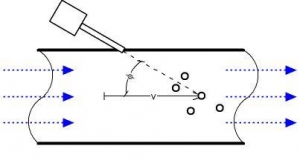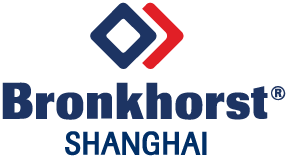Ultrasonic Liquid Flow Measurement
Bronkhorst ES-FLOW™ Ultrasonic Wave Technology
The operation of Bronkhorst? ES-FLOW™ flow meters is based on the propagation of ultrasound waves inside a very small, straight sensor tube, without obstructions or dead spaces. At the outer surface of the sensor tube multiple transducer discs are located which create ultrasonic sound waves by radial oscillation. Every transducer can send and receive, therefore all up- and down-stream combinations are recorded and processed. By accurately measuring the time difference between the recordings (nanosecond range) the flow velocity and speed of sound is calculated. Knowing these parameters and the exact tube cross-section, the ES-FLOW™ is able to measure liquid volume flows in the range of 4 up to 1500 ml/min.
The distinctive character of this flowmeter is that it’s capable to measure the actual speed of sound, meaning that the technology is liquid independent and calibration per fluid is not necessary.

Product link: ES-FLOW™
Other (traditional) ultrasonic flow measuring principles
(Source: Wikipedia. Note well, these techniques are completely different to the technology Bronkhorst applies in their ES-FLOW series and can therefore not be compared.)
Transit time principle

Ultrasonic flow meters measure the difference of the transit time of ultrasonic pulses propagating in a flowing fluid. This time difference is a measure for the average velocity of the fluid along the path of the ultrasonic beam. By using the absolute transit times both the averaged fluid velocity and the speed of sound can be calculated. This measurement principle is only possibly for large bore tubes, for higher flow ranges than the scope of Bronkhorst.
Doppler effect principle

Another method in ultrasonic flow metering, also not suited for very low flowrates, is the use of the Doppler shift that results from the reflection of an ultrasonic beam off sonically reflective materials, such as solid particles or entrained air bubbles in a flowing fluid, or the turbulence of the fluid itself, if the liquid is clean.

